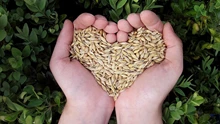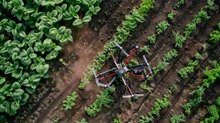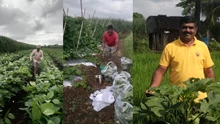
Pulses, the edible dry seeds of legume plants, have long been celebrated for their nutritional value and sustainability in agriculture. From lentils to chickpeas, and even the humble baked bean, these legumes have gained recognition as an alternative, plant-based source of protein. However, their significance transcends mere dietary preferences; pulses play a pivotal role in environmental sustainability, particularly through their unique ability to fix nitrogen from the air, enriching the soil and enhancing crop productivity.
Nitrogen-Fixing Bacteria: Understanding the Science
At the heart of pulses' environmental prowess lies their capacity to form symbiotic relationships with nitrogen-fixing bacteria within specialized structures called root nodules. Through this intricate biological mechanism, legumes convert gaseous nitrogen from the atmosphere into a form readily accessible to plants, thus reducing the need for nitrogen fertilizers. This not only improves soil health but also diminishes the environmental footprint of agricultural practices.
Scientists are delving deeper into the mechanisms underlying nitrogen fixation in legumes, aiming to enhance productivity and extend these benefits to other crops, such as cereals. Initiatives like the Enabling Nutrient Symbioses in Agriculture project are at the forefront of this research, striving to decipher the intricate dance between legumes and beneficial bacteria. By unravelling the mysteries of nitrogen fixation, researchers hope to bolster crop yields and fortify agricultural sustainability on a global scale.
Real-world Impact
Building upon insights gained from studying model legumes like Medicago, researchers are now exploring the applicability of these findings to relevant crop legumes such as soybean and cowpea. Through meticulous experimentation and analysis, they seek to unleash the full potential of nitrogen fixation, enhancing crop resilience, and nutritional content. The ultimate goal is to empower farmers with more efficient and sustainable agricultural practices, thereby fostering food security and rural prosperity.
Pulses: Way to Sustainable Agriculture
The implications of harnessing nitrogen fixation extend far beyond individual crops; they hold the promise of revolutionizing sustainable agriculture as a whole. By reducing reliance on synthetic fertilizers and enhancing soil health, pulses pave the way for a more resilient and environmentally conscious food system. As the pulse of progress quickens in the realm of plant biology, the horizon of sustainable agriculture appears brighter than ever before.
While the journey towards widespread adoption of nitrogen-fixing crops may still be in its infancy, the potential ramifications are profound. As scientists continue to unlock the secrets of legumes' nitrogen-fixing prowess, the prospect of extending this ability to other crops looms ever closer. Such a paradigm shift could herald a new era of sustainable agriculture, offering hope to farmers worldwide, particularly in regions where access to fertilizers is limited.
(Inputs Taken from- The Conversation)












